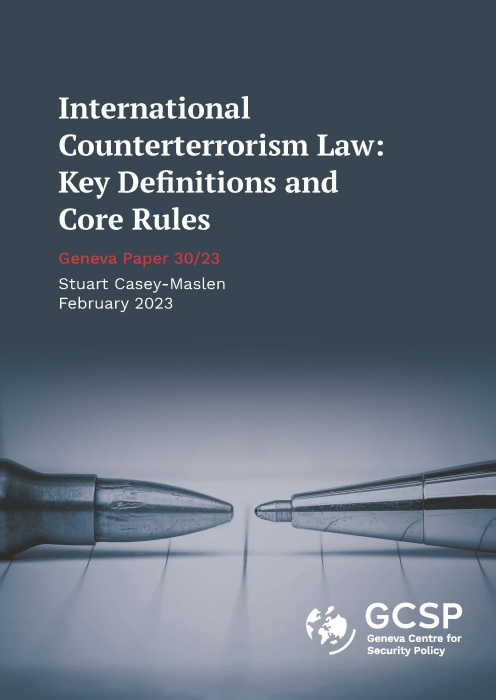International Counterterrorism Law: Key Definitions and Core Rules
This Geneva Paper describes the main components of international counterterrorism law. In addition to the sectoral United Nations (UN) conventions on terrorism, international counterterrorism law encompasses rules across international humanitarian law and international criminal law, and its application is regulated by international human rights law. Also considered is the manner in which jus ad bellum (the law on the inter-state use of force) pertains to acts of terrorism, for this continues to be disputed. Key definitions of terrorism – for there are many, not one – are also discussed, including the difference between international terrorism and domestic terrorism, and between terrorism in peacetime and terrorism in armed conflict.
Disclaimer: The views, information and opinions expressed in this publication are the author’s/authors’ own and do not necessarily reflect those of the GCSP or the members of its Foundation Council. The GCSP is not responsible for the accuracy of the information.


